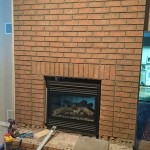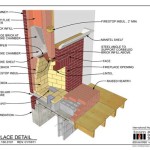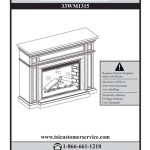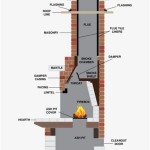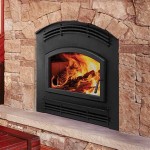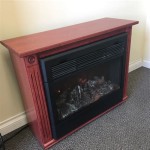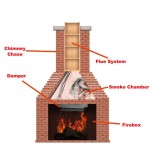Small Gas Fireplace Inserts: Efficient Heating Solutions for Compact Spaces
Small gas fireplace inserts are designed to transform existing wood-burning fireplaces into efficient and convenient heating appliances. These inserts offer a practical and aesthetically pleasing solution for homeowners seeking supplemental heat, ambience, and reduced maintenance compared to traditional wood fireplaces. Their compact size makes them particularly suitable for smaller rooms, apartments, or homes with limited space.
A gas fireplace insert is essentially a self-contained unit that slides into an existing fireplace opening. It operates on either natural gas or propane and vents directly through the existing chimney using a flexible liner. This installation process is generally less disruptive and less expensive than installing a completely new fireplace. Moreover, gas inserts provide a more controlled and consistent heat output, eliminating the need for constant tending and wood storage.
The primary function of a small gas fireplace insert is to provide supplemental heating. Unlike central heating systems that heat an entire house, gas inserts are designed to heat specific areas, such as living rooms or bedrooms. This targeted heating approach can lead to significant energy savings by allowing homeowners to reduce the overall use of their central heating system, especially during milder weather.
Beyond their heating capabilities, gas fireplace inserts offer a significant aesthetic upgrade. They provide the visual appeal of a traditional fireplace without the smoke, ash, and constant maintenance associated with burning wood. Many models feature realistic-looking ceramic logs and adjustable flame settings, allowing homeowners to customize the ambience of their living space. The glass front of the insert offers a clear view of the flames while also providing a safety barrier.
Key Point 1: Understanding the Benefits of Small Gas Fireplace Inserts
Small gas fireplace inserts offer a multitude of benefits compared to traditional wood-burning fireplaces, making them an attractive option for homeowners prioritizing convenience, efficiency, and safety. These advantages extend beyond simple heating, contributing to improved air quality and reduced maintenance requirements.
One of the most significant benefits is the ease of use. Gas inserts eliminate the need to chop, stack, and store wood. With the simple flick of a switch or the push of a button on a remote control, the fireplace can be ignited and adjusted to the desired heat output. This convenience is particularly appealing to individuals with limited mobility or those who simply prefer a hassle-free heating solution.
Efficiency is another key advantage. Gas fireplaces are significantly more efficient than wood-burning fireplaces, converting a higher percentage of fuel into usable heat. This increased efficiency translates to lower energy bills and reduced environmental impact. Modern gas inserts often feature advanced technologies, such as thermostatic controls and programmable timers, which further optimize energy consumption.
Safety is paramount when considering any heating appliance. Gas fireplace inserts are designed with safety features that minimize the risk of fire and carbon monoxide poisoning. The sealed combustion chamber prevents harmful gases from entering the home, and the glass front protects against accidental contact with the flames. Regular maintenance and professional inspection are still recommended to ensure continued safe operation.
Finally, gas fireplace inserts contribute to improved indoor air quality. Unlike wood-burning fireplaces that release smoke, particulate matter, and other pollutants into the air, gas inserts burn cleanly, reducing the risk of respiratory problems and allergies. This is particularly beneficial for individuals with asthma or other respiratory conditions.
Key Point 2: Factors to Consider When Choosing a Small Gas Fireplace Insert
Selecting the right small gas fireplace insert requires careful consideration of several factors, including the size of the existing fireplace opening, the heating needs of the space, the desired aesthetic, and the budget. A thorough assessment of these factors will ensure that the chosen insert meets the homeowner's specific requirements and provides optimal performance.
The first step is to measure the dimensions of the existing fireplace opening. This measurement is crucial to ensure that the insert will fit properly. The height, width, and depth of the opening should be carefully recorded and compared to the specifications of the various insert models. It's also important to consider the shape of the opening, as some inserts are designed for rectangular fireplaces while others are suitable for arched or irregular shapes.
Next, the heating needs of the space should be assessed. This involves considering the size of the room, the insulation levels, and the climate. A larger room or a poorly insulated home will require a more powerful insert with a higher BTU (British Thermal Unit) rating. A BTU rating indicates the amount of heat the insert can produce per hour. Consulting with a qualified HVAC professional can help determine the appropriate BTU rating for a particular space.
Aesthetics play a significant role in the selection process. Gas fireplace inserts are available in a wide range of styles, from traditional to contemporary. The desired aesthetic should complement the existing décor of the room. Factors to consider include the design of the firebox, the type of logs, and the finish of the surround. Some models offer customizable options, such as different log sets, decorative fronts, and remote control features.
Budget is always a key consideration. The cost of a gas fireplace insert can vary depending on the size, features, and brand. It's important to establish a budget before starting the shopping process and to compare prices from different retailers. In addition to the cost of the insert itself, it's also necessary to factor in the cost of installation, which can include the purchase of a venting liner and professional labor. Finally, long-term operating costs, such as gas consumption and maintenance, should be considered.
Key Point 3: Installation and Maintenance of Small Gas Fireplace Inserts
Proper installation and regular maintenance are essential for ensuring the safe and efficient operation of a small gas fireplace insert. Improper installation can lead to safety hazards, such as gas leaks and carbon monoxide poisoning. Regular maintenance helps to prevent problems and prolong the life of the insert.
Installation should always be performed by a qualified and licensed professional. This ensures that the insert is installed correctly and in accordance with all applicable building codes and safety regulations. The installation process typically involves several steps, including preparing the fireplace opening, installing a flexible venting liner up the chimney, connecting the gas supply, and testing the operation of the insert.
The venting liner is a crucial component of the installation. It is designed to safely vent the combustion gases from the insert up the chimney and out of the home. The liner must be properly sized and installed to prevent leaks and ensure proper draft. In some cases, the existing chimney may need to be inspected and repaired before the liner can be installed.
Once the insert is installed, regular maintenance is necessary to keep it operating safely and efficiently. This includes cleaning the glass front, inspecting the logs, and checking the venting system. The glass front should be cleaned regularly with a non-abrasive cleaner to remove soot and grime. The logs should be inspected for cracks or damage and replaced if necessary. The venting system should be inspected annually by a qualified professional to ensure that it is free of obstructions and leaks.
In addition to regular maintenance, it's also important to have the insert serviced periodically by a qualified technician. This service typically includes checking the gas pressure, inspecting the burner, and cleaning the pilot light. Regular servicing can help to identify and correct potential problems before they become major issues.
Finally, homeowners should be aware of the signs of a potential problem with their gas fireplace insert. These signs may include a gas odor, a yellow or orange flame, or a clicking sound from the pilot light. If any of these signs are present, the insert should be turned off immediately and a qualified technician should be contacted for assistance. Following these guidelines will help ensure the safe and reliable operation of the gas fireplace insert for years to come.

L234 Small Radiant Gas Fireplace Insert Regency

Small Fireplace Xtrordinair

Small Fireplaces I Hearthcabinet Ventless

L234 Small Radiant Gas Fireplace Insert Regency

Small Gas Fireplace Inserts

Small Fireplace Xtrordinair

The Most Stylish Small Gas Fires This Year Direct Fireplaces

Small Fireplace Xtrordinair

Gas Inserts That Fit Mid Sized Openings Friendly Fires

Radiant Plus Small Gas Fireplace Insert All Season Spas And Stoves
Related Posts

